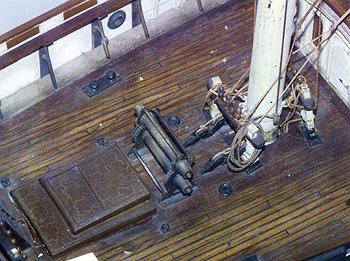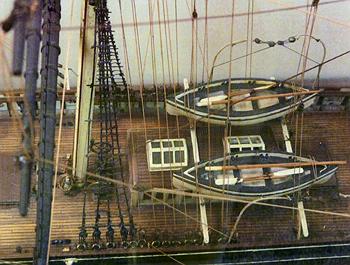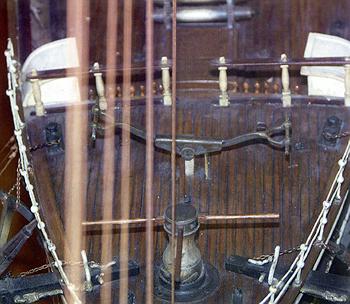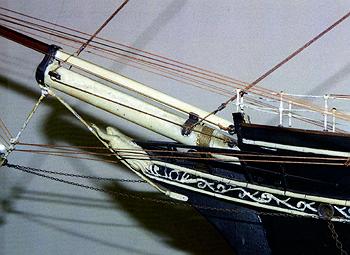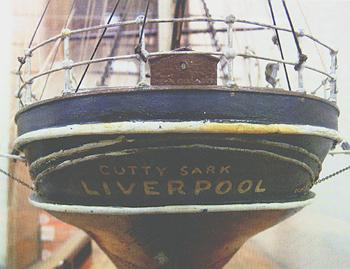The tea clipper Cutty Sark may have been the fastest ship of her day, but the wool trade Cutty Sark obviously was. By a wide margin, too - she won the race from Australia to England ten years out of ten under Captain Woodget. And, her hull and a few other original parts still survive in dry dock at Greenwich England. So, there have been many models made of her over the years including several commercially issued ones.
This 1:48 model is unusual in several respects. First, it is believed by expert British opinion to have been made about the time of the building of the real ship in the late 1860's. It is very well detailed in most respects, especially the iron work that bespokes a practical knowledge of the craft, although weak on painted decoration. Almost all its details are in accordance with what research done for the Cutty Sark Trust concludes was her state when ready to sail on her first voyage in early 1870. But, there are a few precisely made differences. Here are the main ones:
- the home port on the stern is Liverpool rather than London,
- there are two foremast fife rails rather than just one forward (an error also present in the Revell 1:100 model),
- there is only one main fife rail (forward) rather than two,
- the rear deckhouse has two skylights, leaving no room for the 4th boat specified by Willis (the 4th boat is also missing in the Revell model),
- the booby hatch is on the forward hatch rather than the rearward,
- the bobstay is iron not chain,
- the WC doors have two panels rather than one, and
- there are no hen coops.
The home port designation is a strong indication that the model was made by a proud Liverpudlian. The others, in a model otherwise so precisely made in even fine detail such as the size of deck wood and of metal sheathing, led to the owners' hope that it might have been made during her planning and initial construction by Scott&Linton of Liverpool, perhaps before Lloyd's surveyors began to order changes as required to meet their A1 standard specified in the construction contract, perhaps before construction had to be completed by Denny Bros. who were under cost pressures imposed by anxious creditors. However, the original specifications of Jock Willis do not include any of these details, so this is unlikely as an origin. It might possibly have been begun while the ship was in Liverpool, possibly even by someone who worked on her, then completed from memory, but there's no evidence for or against that.
Whatever its true source, it remains a superbly made model.
John Sankey 1968
The Ship Cutty Sark
other notes on family history
